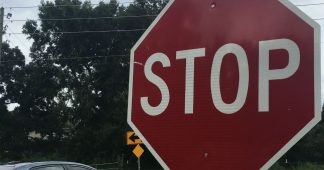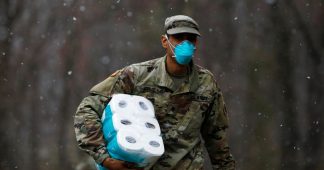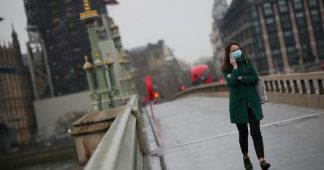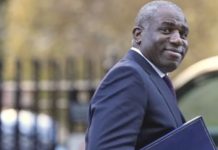By Peter Andrews
15 Apr, 2020
The shocking estimate, first reported in the Financial Times and the Spectator magazine, was presented to UK government ministers by scientists who had modelled the likely effects of the restrictions.
The cause of the non-Covid deaths will be varied, from cancer sufferers and other seriously ill people not getting treatment, from people avoiding going to hospitals (visits to accident and emergency units are down by a third), from an increase in suicides among depressed people forced to self-isolate and from the effects of increased domestic abuse.
Asked about the 150,000-deaths estimate, the UK’s Health Secretary Matt Hancock sought to play it down, describing it as “not part of our internal analysis.” But Mr Hancock will not be able to give the figure the brush-off for long, as each passing week reveals more clues as to the detrimental effects caused by the unprecedented lockdowns.
The use of the term “avoidable” deaths by the scientists is telling. It stands in contrast to Covid-19 deaths, most of which are likely to be unavoidable, affecting as they largely do the very old and very infirm, who, callous as it sounds, would not have seen next Christmas anyway. It is for this reason that some have estimated that Covid-19 may not in fact cause any extra deaths by the end of the year, even if it does kill some people a bit earlier than they would otherwise have died.
The 150,000 estimate, along with dire warnings about the severe damage being done to the economy by the lockdown, has added urgency to an increasingly fraught debate in the upper echelons of British government about how to start easing the lockdown and return the nation to a version of normal life.
Furthermore, politicians have apparently been taken aback at how easy it was to impose the restrictions on the public, and how docile and compliant they have been in their acceptance of their new way of life. There is very much a sense of the measures having worked ‘too well’ and of having created something of a monster. Their modellers have been stumped by the self-control of the entire population – that they allegedly expected many people to carry on working and at least one million children to be left in school by parents shirking the lockdown.
Matt Hancock is now saying that he is worried “a lot” about the public health risks of insisting that people stay at home, and is urging people “not to avoid” the NHS.
The doctor will not see you now
So how exactly could the lockdown kill people? The first and most obvious way is in the almost total overnight cessation of normal healthcare measures. If you are sick right now, unless you can test positive for coronavirus, then healthcare systems do not want to know about you. In anticipation of a crisis in public hospitals and a rush on limited intensive care units, hospitals were more or less cleared out in preparation for the coronavirus.
All non-urgent surgeries have been delayed until further notice, all non-essential interventions postponed. Cancer treatments are being pared back, as is care for other chronic illnesses. None of this is to mention what untold damage could be done by the disruption to people’s exercise routines, especially the elderly people in whose name the lockdown is being imposed.
Suicides are another obvious risk to point to. President Trump touted increased suicides as a reason for not shutting down the US economy early on in his rollercoaster relationship with coronavirus policy. Suicides happen at a given rate anyway, of course, with young men committing most of them. But it is not hard to imagine how being forced out of work and into homes, with no access to social networks, support services or even regular exercise could trigger an upsurge.
And even if it doesn’t, it is well documented that suicides increase in times of economic hardship, and a global recession is one thing that is guaranteed with coronavirus. Emergency responders are already starting to report “early indications” of an increase in suicide attempts.
Although one might assume that deaths from car accidents would be down due to lockdown, and the amount of traffic is indeed way down, empty roads actually encourage faster and more reckless driving, perhaps cancelling this out. And the list goes on: domestic abuse, drug overdoses, ruined careers and failed businesses are all bound to contribute towards that 150,000 figure. And of course it is just a model, an estimate, done in a similar way to the 500,000 estimate for Covid-19 deaths contained in the Imperial College projection that sparked the global shutdown. Only time will tell which one is likely to prove the most accurate.
Planes, peanuts and projections
Deaths caused by a lockdown meant to save lives would be a particular kind of irony, which does not have a name, although perhaps it should (Ironic Dissonance?). Many will be familiar with the increase in people killed in car crashes that occurred after 9/11, as Americans shunned air travel in favour of the statistically deadlier highways. The German risk scientist Professor Gerd Gigerenzer has calculated that an additional 1,595 Americans died on the roads in the year following the attacks.
Perhaps a similar sort of thing is the contrasting ways society treats everyday things which are in fact very dangerous with their comparatively innocuous but more “scary” counterparts. If scientists produced a new genetically modified food, one particle of which caused inflammation in about one percent of the population and anaphylactic shock in some people, it would not be allowed outside the lab. But that is exactly what peanuts are. Or, it is more dangerous to have a swimming pool in your house than a gun (without wishing to open that can of worms).
It is too early in the year to tell exactly how all of these factors will pan out in relation to coronavirus and lockdowns. But when all is said and done, more people could actually have died as a result of the lockdown measures than from Covid-19-related complications. That would be an irony to top all others
* Peter Andrews, Irish science journalist and writer based in London. He has a background in the life sciences, and graduated from the University of Glasgow with a degree in genetics.











